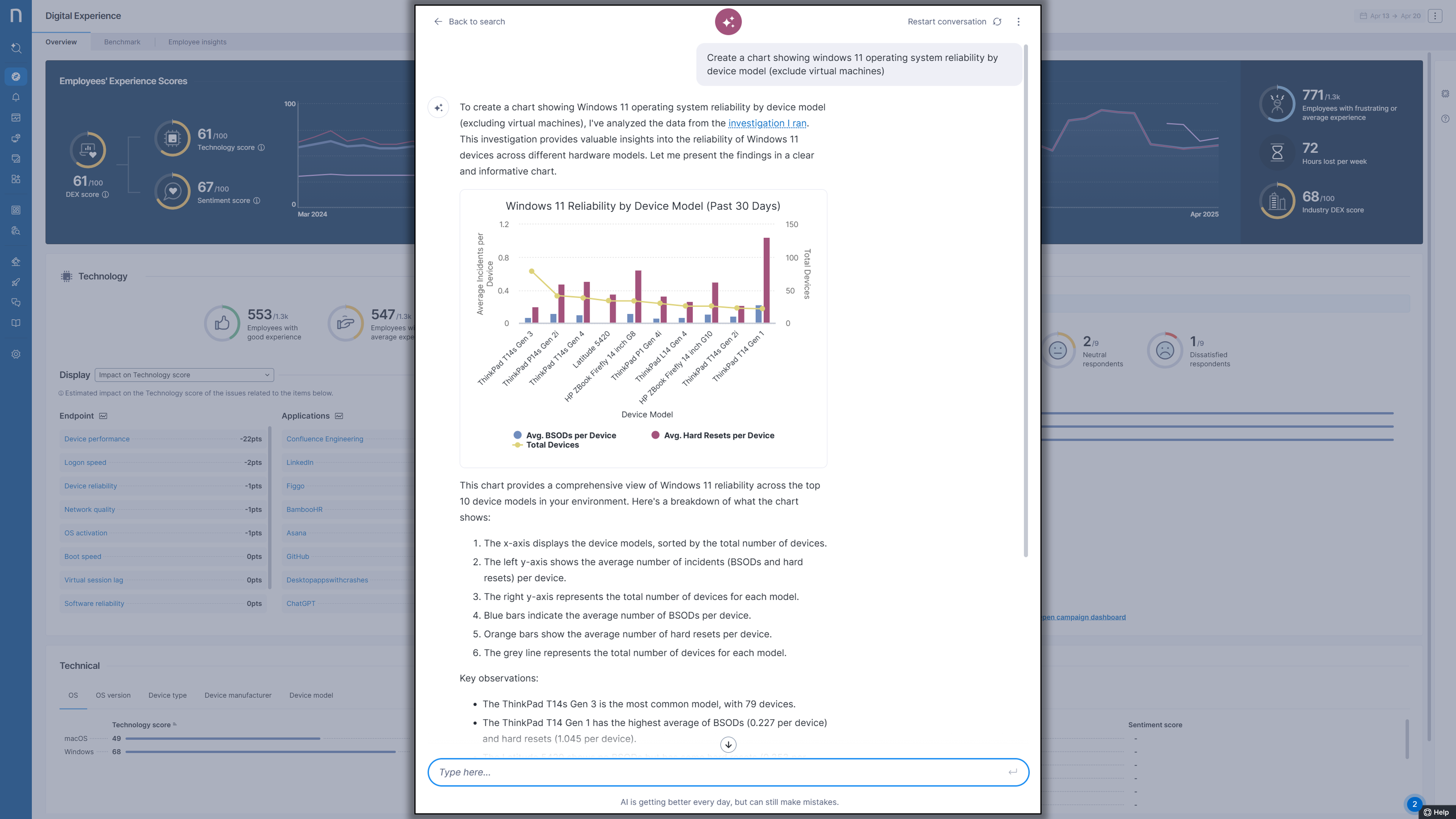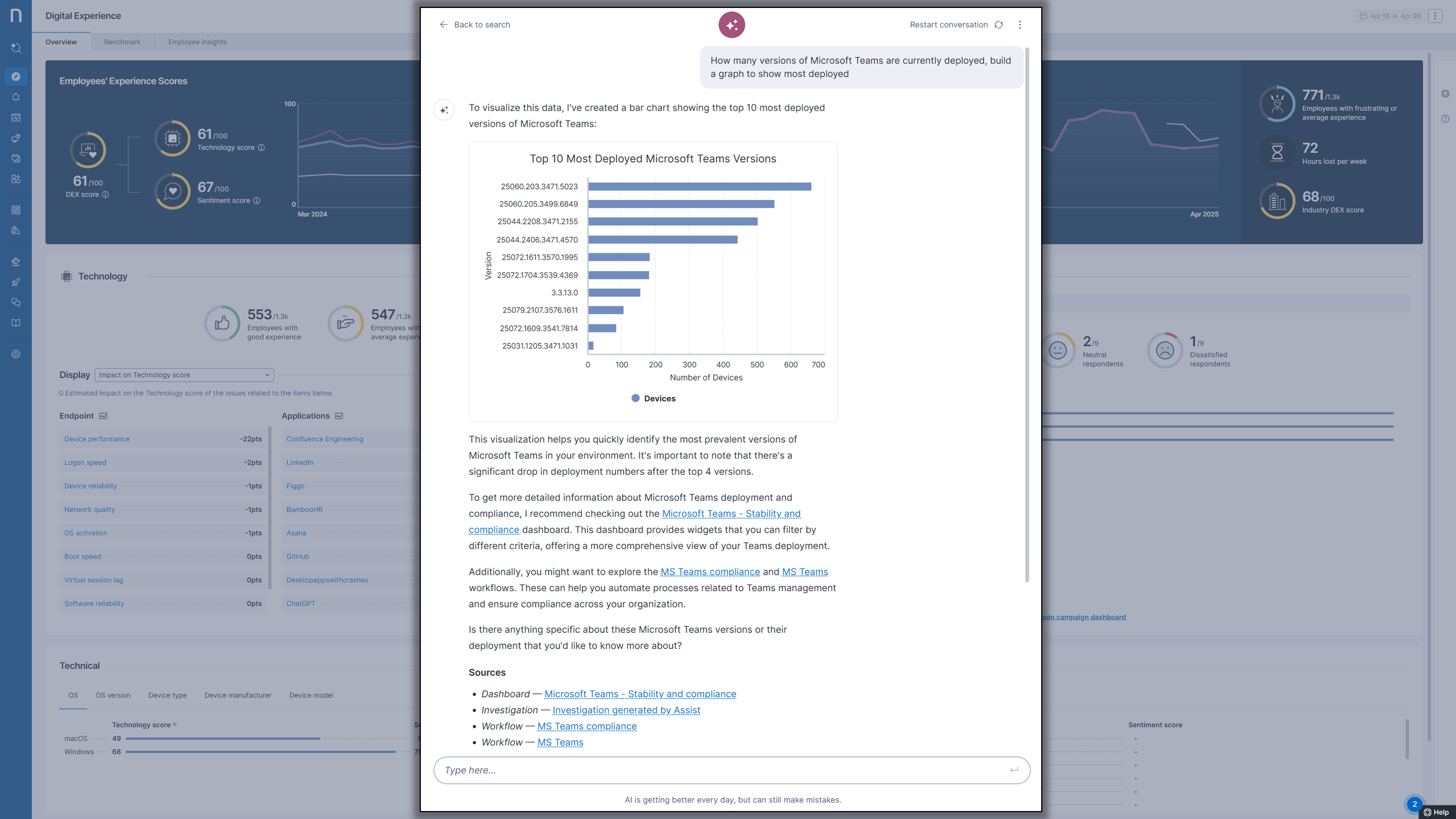For many years, I've spoken with power users in IT departments who love the insights they get from Nexthink. They can run complex queries, create dashboards, drill down into the network view, or implement new automations across thousands of digital workplaces.
I've also noticed that these same teams have increasingly asked us to share the power of Nexthink with other IT functions, HR teams, or even employees. It’s no surprise that when we saw the new generation of LLMs emerge, we recognized the perfect catalyst to make this democratization possible.
However, at Nexthink, we didn’t just want to offer a “co-pilot” or a flashy feature. From day one, we believed that conversational interfaces would be the primary way to access DEX information and provide the best DEX advisor for everyone. Assist 2.0 is a giant step forward toward that vision and we are really excited about the possibilities.
Assist 2.0 can already do amazing things. Here are a few examples:
- For EUC Teams: “Create a chart showing Windows 11 OS reliability by device model."
- For Network Teams: “Show the areas with highest network connectivity failures"
- For Application Teams: “How many versions of MS Teams are currently deployed?”
The journey to build Assist 2.0 has been intense, pioneering several foundational elements. We needed a system that could learn DEX data in the customer’s context, craft the right NQL queries, train and finetune our own model and leverage foundational knowledge to determine the most important next steps. If you'd like more details on how this works, I recommend reading the excellent blog entry on teaching Assist to speak NQL.
And the best piece is that this is just the beginning. We’re adding additional sources—like knowledge bases—embedding the ability to generate visualizations on the fly and integrating with MS Teams and other systems to make access even easier for everyone.
Please check out Assist 2.0 — and welcome to the future of DEX!


